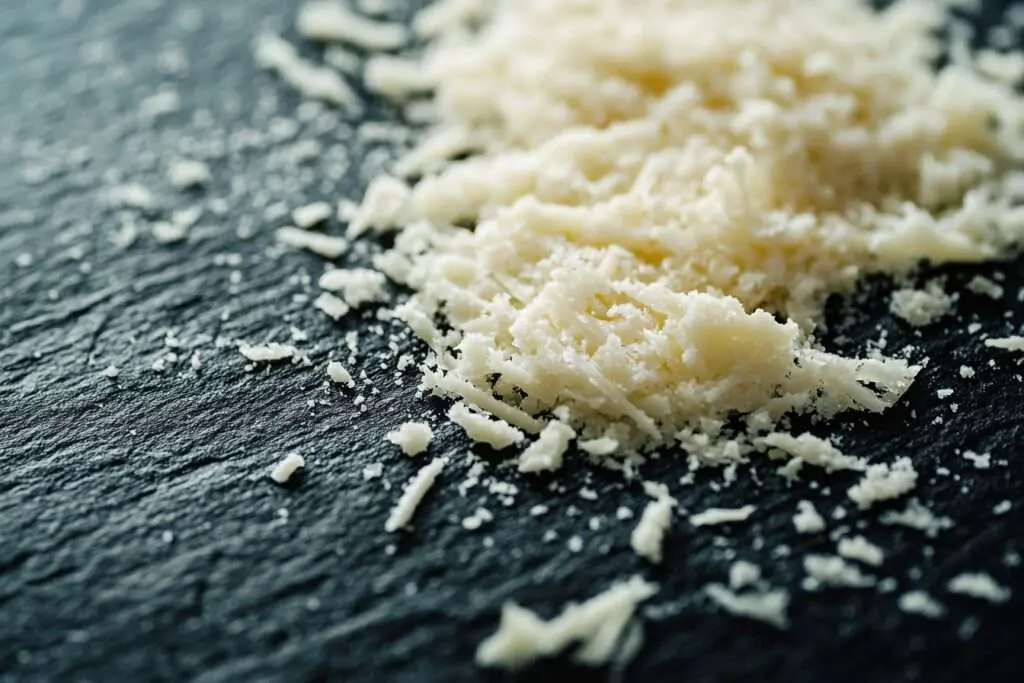Would you believe that the grated Parmesan cheese sitting in your refrigerator might contain up to 8.8% wood pulp? Before you toss out your cheese in horror, there’s more to this story than meets the eye. This FDA-approved ingredient, known as cellulose, appears in countless everyday foods – and it’s been right under our noses since 1973.
Why manufacturers add wood pulp to cheese

When you sprinkle pre-grated Parmesan on your pasta, you’re getting more than just cheese. Food manufacturers add cellulose to prevent the cheese shreds from clumping together. This practice isn’t limited to generic brands – even products labeled “100% cheese” might contain this wood-derived additive.
The addition of cellulose to food isn’t new. In fact, European bakers in the 1700s mixed sawdust with flour during wheat shortages. Today, cellulose serves multiple purposes in food production, from anti-caking agent to thickener, while reducing production costs.
Ice cream’s secret ingredient
That smooth, creamy texture in your favorite ice cream? It might come from an unexpected source. Cellulose appears frequently in frozen desserts, especially in low-fat varieties, where it helps create the rich mouthfeel typically provided by fat. Next time you’re browsing the freezer aisle, check the ingredient list – you might spot cellulose gum or cellulose powder.
Many premium ice cream brands skip the cellulose, but they often come with a higher price tag. Some manufacturers have started experimenting with natural alternatives like seaweed-derived additives to achieve similar results.
Bread stays fresh longer with wood pulp

Wonder why that loaf of bread stays soft long past its expected expiration date? Cellulose in processed breads helps maintain moisture and prevents the growth of mold. From bagels to burger buns, this wood-derived fiber appears in countless baked goods.
If bread could talk, it might thank cellulose for its extended shelf life. Without this ingredient, many commercial breads would become stale or moldy within days, leading to increased food waste and higher costs for consumers.
Fast food’s fibrous friend
That fast-food burger you grabbed for lunch? It likely contained cellulose in both the bun and the patty. Fast food chains use this ingredient to maintain consistent texture and prevent ingredients from separating. Some veggie burgers contain even more cellulose than their meat counterparts.
The next time you’re waiting in the drive-thru, remember that cellulose helps keep your meal affordable and consistent. Without it, fast food prices might rival those of sit-down restaurants.
Salad dressing’s thickening secret

That creamy ranch dressing owes its thickness partly to cellulose. Food manufacturers use it to maintain consistent texture and prevent separation. Without cellulose, your favorite dressing might require vigorous shaking before each use.
Some brands have started using alternative thickeners like xanthan gum or modified food starch. However, cellulose remains a popular choice due to its stability and cost-effectiveness.
Morning cereal’s fiber boost
Many breakfast cereals boast high fiber content on their boxes. Often, this comes from added cellulose rather than whole grains. The cereal industry has embraced cellulose as an inexpensive way to increase fiber content while maintaining the crispy texture consumers expect.
What if your favorite cereal suddenly removed all its added cellulose? You might notice a different texture, lower fiber content, and possibly a higher price tag.
Frozen meals and wood pulp
Frozen entrées rely heavily on cellulose to maintain texture through freezing and reheating. From frozen pizza to microwave burritos, this ingredient helps prevent ice crystal formation and keeps sauces from separating.
The frozen food industry has mastered the art of using cellulose to create meals that taste fresh after months in the freezer. While some consumers might prefer meals without this additive, they’d need to sacrifice convenience or pay premium prices for alternatives.
Understanding what’s in our food empowers us to make informed choices. While the presence of wood pulp in food might sound strange, cellulose has helped make processed foods more accessible and affordable. Whether you choose to embrace or avoid it, knowledge about this common ingredient adds another layer to our complex relationship with modern food production.


